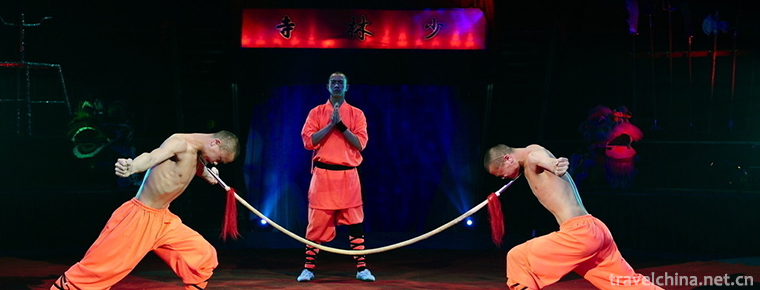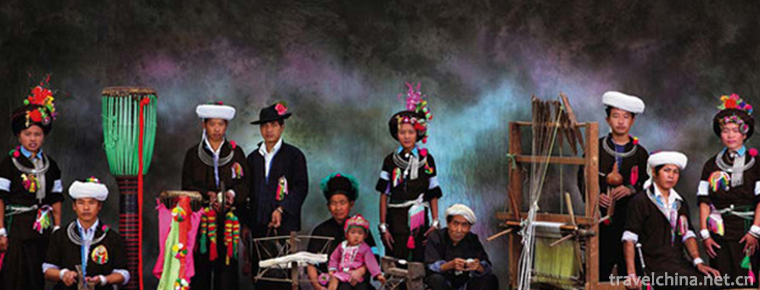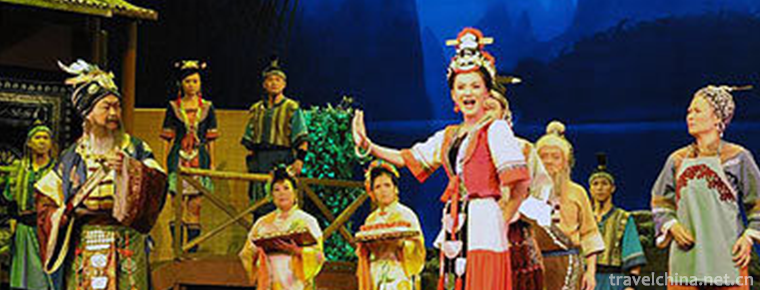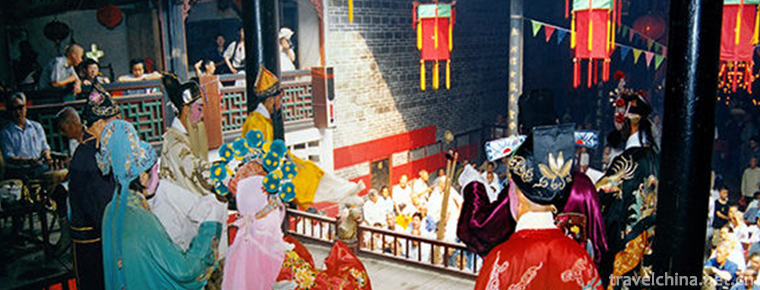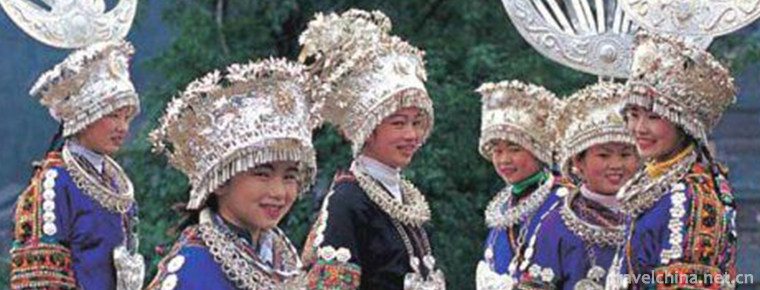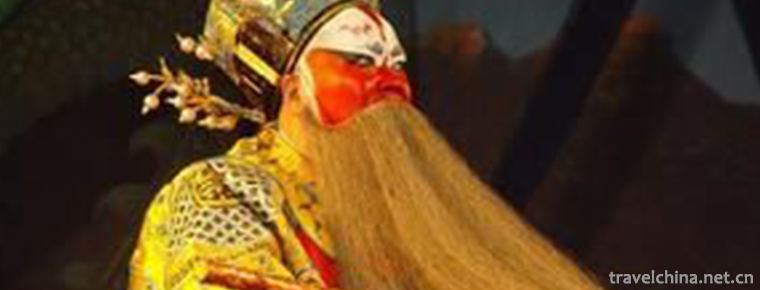Zhaohua Ancient City Scenic Area
Zhaohua Ancient City Scenic Area
The ancient city of Zhaohua has a long history and rich humanities in Zhaohua Town, Zhaohua District, Guangyuan City, Sichuan Province. The original name of Yichang County was changed to Zhaohua County. Located at the intersection of Bailongjiang, Jialing and Qingjiang rivers, its Jialing rivers are flowing here. Its water system is Wancheng and Taiji is Tiancheng. It has the reputation of "the world's first mountain and water Taiji" natural wonder.
The ancient city is surrounded by mountains on all sides, with beautiful mountains and rivers, outstanding people, numerous ancient sites and relics, and simple and elegant folkways. It is an ideal place for tourists, leisure holidays and scholars to study archaeology.
brief introduction
Zhaohua is an important part of Jianmen Shudao Scenic Spot, a national key scenic spot, and the site group of Jianmen Shudao, a national key cultural relic protection unit. The ancient city scenic spot covers an area of 20 square kilometers with a total population of 17,000. It was named as a famous historical and cultural town of Sichuan Province by the Sichuan Provincial People's Government in 1992. The ancient city still has a rich historical and cultural heritage. On December 10, 2011, at the 1st CCTV-7 "Local Land Grand Ceremony" party organized by the Chinese Association of Folk Literary Artists, the International Organization of UNESCO and Folk Art (IOV), China Agricultural Film and Television Center and China Network Television Station, Zhaohua Ancient Town in Guangyuan Zhaohua District jointly won the top 10 awards in China with ten ancient towns such as Lijiang in Yunnan Province. Ancient Town Award with Humanistic Background.
geographical environment
The layout of the ancient city complex is reasonable. The existing four streets and five alleys are all made of local green sand slabs in the style of tiled back with three horizontal, two vertical and high middle sides and low sides. The "D" between streets and lanes is connected, which has the military defensive characteristics of "road intersection, city gate is not relative". Streets and alleys have a good spatial pattern and friendly and pleasant scale. On both sides of Ancient Street, there are complete Ming and Qing buildings, mostly wooden structures, small green tiles and primitive folk houses with northern Sichuan flavor.
Seven kilometers east of the ancient city lies the tomb of Bao Sanniang. Bao was the wife of Guan Yu's third son, Guan Suo. He fought with the army and was buried here after his death. The tomb was stolen in 1914 by French archaeologists Segaran and Ladige. Its rubbings are now in the Paris Museum. But the tomb still exists, the stone is solid, and the interior is dark and buckling. There is a stone tablet in front of the tomb: "The Tomb of Bao Shi, wife of General Guansuo of Shuhan Dynasty", which is a rare ancient tomb of the Han Dynasty.
Outside the eastern gate of the ancient city of Zhaohua, the confluence of Jialing River and Bailong River is the famous "orange-cypress ancient crossing" on the Shudao line. In the past, tens of thousands of people held hands during the day and thousands of lights at night. The story of Emperor Xuanzong's fortune to Shu in the old and new Tang Dynasty books, "When you meet a Pisces carrying a boat to cross the border, the critic thinks the dragon" happens here. According to legend, Tang Minghuang was also banqueting on the South Bank of the ferry for three days, which is still called "Banquet Dam". The Chronicle of Prefectures and Counties records that Tang Qizong fled to Sichuan and joined at the Jubai Ferry, where the water was high and the boat was difficult to cross. Because of the white water of Bailong River and the red water of Jialing River, he joined at the beginning, and maintained his own direction and nature. "Jingwei is distinct" and "Jingwei is clear and muddy, like two dragons rolling over. Past poets Du Fu, Yao He, Yueyu, Yang Shen, Wang Shizhen and so on all have chanted about it. Ferry's original stele inscribed more than 30 passes, there are few, but the people remember most clearly, is "Tangxian Ling why easy waist Kuala fibre stele".
This monument tells how easy it was for Yichang (now Zhaohua) county magistrate to tie up his waist and pull up his jacket and insert the board in his waist during Tang Yizong's reign to lead the boat for the spring parade boat of Lizhou's Achilles Cuipo, so as to resist the head of the company, Cui Xianshi, who wanted him to catch the people to pull the boat despite the busy farming. Cui Shishi was so ashamed of his actions that he had to stop sailing. He created an image of an honest and upright official with great righteousness and command for the people. At the same time, Sun Qiao, a scholar of the times, passed by Yichang and inquired about it. He wrote the article "How easy is a book?" In this way, the cruel officials and the corrupt official appointment system of the imperial court, regardless of the people's life and death, were exposed and criticized mercilessly. Many of the poetry tablets at the ferry were praised by He Xianling. Zhang Chuanshan's poems in the Qing Dynasty said, "The two rivers still flow around the county. There are no ancient Fairies in the Tang Dynasty. Tea burns emperor's edicts alone. What's wrong with boat painting? Farmers under the tablet should shed tears, while women in Sangyin do not know their worries. Sun Qiaobi, a scholar of Xiantong, often makes pedestrians pay more attention to profit. Local people are well-known and have been passed on for thousands of years.
Outside the west gate of the ancient city, close to the tomb of Fei You, there is also a "Ding Gong Temple". Ding Gong, father and son of Ding Gongbao, was governor of Sichuan province in Chengdu in the second year of Gong Bao's reign in Guangxu. Sichuan famous dish "Kung Bao Ding" is what he advocated. Ding Gongbao's father, Ding Jianye, was a county magistrate in Zhaohua, where he was born. It is said that his mother is now from Lishu Village, Baolun Township. After Ding Gongbao became the governor of Sichuan, he built the Ding Gong Temple in Zhaohua, and the inscription of the monument still exists.
Historical culture
Zhaohua Ancient City is a precious historical scroll, which condenses the continuous history of the establishment of local regimes in China. It is one of the earliest county administrations in China to implement county system management, and has the reputation of "the first county in Bashu".
Living Fossil of Ancient City Civilization
The ancient city of Zhaohua has a history of over 4000 years since Tangyu. Despite its long history, the ancient city civilization has been less impacted by modern civilization. It is the only ancient county town with better preservation and the best preservation in China so far. The ruins of the ancient city of Qin Jiameng after the flooding are clear and controversial. A large number of ancient ruins of the three kingdoms, such as the ancient post road, the ancient pass of Jiameng, the Tomb of Fei You, the Temple of Wuhou, the Temple of Fei Jinghou, the Victory Dam, Tianxiong Pass, Niutou Mountain, Jiang Wei Jing, the Gudu of Jubai, Guansuocheng and the Tomb of Bao Sanniang, are still preserved intact and rare in China. The ancient city walls in the Han Dynasty and the ancient city gates, Bagua wells and Longmen Academy in the Ming and Qing Dynasties are well preserved. Bronze stones, boat coffins, tombs and bricks of Qin, Tao and Han dynasties have been excavated. Zhaohua Ancient City people outstanding, Zhong Ling Yuxiu, countless Qing officials left a touching story, many literati, poets and poets left countless handed down works, adding a magnificent chapter to the history of China. How easy it is for Fei Mao to cross a boat in Hanshou, Xu Xin to die in Changling Mountain, Wu Zhenqi to write and comment on dramas, once when Ji believed in sericulture, Meng Zhaojianxue Palace educated people... Everyone admired the story. The vicissitudes of Jiameng Guguan and Tianxiongguan years, and the sound of the Tangbaitan River, left numerous poems by literati and poets such as Du Fu and Lu You. In memory of Ding Jianye and Ding Baozhen's father and son, who donated money to buy property and forever saved the human horse, the ancestral temple of Ding Gong was built outside the west gate of the ancient city. The ancestral temple meeting of Ding Gong was held on April 28 of the lunar calendar. Niu Wang Hui in Niu Tou Mountain on the first October of the lunar calendar and Chuanzhu Temple Fair in Ren Tou Mountain on the first and twenty-four June of the first lunar month, the "Three Kingdoms Culture and Art Festival" and "Three Kingdoms Culture and Tourism Festival" held annually during the Golden Week of the Spring Festival and the Golden Week of the National Day, have become traditional activities of the ancient city, attracting tourists and scholars from all directions to visit,
According to the Records of the Three Kingdoms, Previous Biographies, it reads: "First, the Lord went north to Jianmeng, and then asked Lu for help, so as to win the hearts and minds of the people." In the seventeenth year of Jian'an (A.D. 212), Liu Bei went to Jianmeng to inspect the terrain. As Zhang Song had presented, he said, "The two rivers of this city converge and go around the east of the city; the ancient road of Taurus crosses the city; the gate of Jianmen is majestic and towering; the ancient crossing of Jubai and Qianjiang refuse to defend." Although it is a "city of bullets, it is a city of golden soup", it is a strategic place to garrison and train soldiers and horses in the tenth year of Jian'an. Seven years (A.D. 212), taking the opportunity of Cao Cao's attack on Dongwu and adopting Pang Tong's opinions, he turned around and left Zhengmeng for the sake of helping Dongwu, went west of Jiange and captured Chengdu, forcing Liu Zhanggong to surrender, laying a solid foundation for the establishment of Shu State. In the first year of Zhangwu (221 A.D.), Liu Bei established the Kingdom of Shuhan in Chengdu and became emperor Zhaolie himself. At this time, Liu Bei, not forgetting the prosperity of the old base area of Jianmeng, personally from the popular auspicious "Han Zuo Yongshou" (you, meaning the position of the emperor), took the first and last two words to change Jianmeng into Hanshou County. He placed his hopes on the creation of Hanshu Jiangshan, coexistence with heaven and earth, and longevity with the sun and the moon. Therefore, there is the theory that "Shuhan is prosperous and Jiameng is sprouting".
After the establishment of Shuhan regime, Hanshou City was the base and command center of military supplies transshipment for Zhuge Liang's six-way expedition to Qishan Mountain and Jiang Wei's nine-way expedition to the Central Plains. Zhuge Liang has been busy on the ancient Shu Road of Jiameng since he was built five years ago. In the nineteenth year of Yanxi (252 A.D.), Fei Zou was appointed to open the Premier's Office in Hanshou. He took charge of the military and political affairs of Shu State after Jiang Wan. The next year, he was drunk and killed by Guo Xun by Cao Wei-jiang. He was buried in Hanshou (now Zhaohua). After the murder of Fei You, Jiang Wei took charge of the military power of Shu State, but the nine expeditions to the Central Plains failed. In the winter of the fourth year of Jingyuan (Annals of the Three Kingdoms, Zhong Huizhuan), the Wei State attacked Shuhan in three routes. Jiang Wei retreated to Jianmen Pass, hoping to resist the enemy by virtue of the danger of Jianmen Pass. He sent left-cycling general Zhang Yi, assistant general Dong Jue and original guard Jianmeng Hu Ji and Guansuo to defend Hanshou (Zhaohua). At the same time, Wei Jungzhong Hui set up a position in Jubaidu in an attempt to cross the Jialing River and seize Hanshou City. The two armies fought many times. Mrs. Guan Suo Bao Sanniang died in the battle. After her death, she was buried in the northern suburbs of Zhaohua City. The Tomb of Bao Sanniang has been preserved to this day. In November 263 AD, "Wings, Jufu to Hanshou, Uygur and Huahua also withdrew from Yinping, suitable for wing and Jue, all withdrew from JianGe to refuse meeting." Deng Aijun Yueyin Ping broke Zhuge and looked to Mianzhu. Liu Chan asked for his descent. The Shuhan regime, which had lasted for 42 years, was declared extinct. Although the Shuhan regime was extinct, the ancient city of Zhaohua recorded the rise and fall of Shuhan in the Three Kingdoms and the legends and relics left behind, but it provided rich historical materials for the study of the culture of the three kingdoms. Therefore, there are: "Shuhan prospers, Jia sprouts; Shuhan dies, Jia sprouts." Folk rumors.
In July 2004, Professor Ruan Yisan, Director of the Center for Research of Famous Chinese Historic and Cultural Cities, Tongji University of Shanghai, visited the ancient city of Zhaohua and evaluated its architecture as follows: eight-shaped gate head, vertical arch, bluestone pillar foundation, wooden pillar basement; three-sided outline, door and window lattice, exquisite carving, simple decoration, luxurious residence of businessmen and merchants, preserving the style of historical stories. In 2003, the Yuanba District Committee and the District Government adhered to the principle of "protection first and rational utilization" when restoring the ancient city of Zhaohua. They invited professors of Sichuan University and Tongji University to guide the restoration of the ancient city many times. During the construction, they carefully constructed and repaired the old as before, striving to restore the original architectural style of the ancient city. After years of careful construction and restoration, the overall style of the ancient city of Zhaohua has been obtained. Fully restored, an ancient city showcasing the past prosperity and splendor has come back to the world.
folk culture
Zhaohua Ancient City, a thousand-year-old civilization contains a large number of folk customs and cultures. It has nearly 20 kinds of traditional festivals and customs, such as Chuanzhu Temple Fair, Chenghuan Festival, Niu Niu Deng, lotus boat, tall feet, hawking, crying and marriage, etc. It originates from the local popular "Zhang Feiqiaodeng Night Battle Horse Chao", how easy it is to "Yaohuan Pull Fiber", Tang Minghuang Banquet, Jiang Weibing and so on. There are more than 30 legendary stories about trapped Niutou Mountain. It has more than 200 Zhaohua famous songs such as "Giving Sons to Women" and "Marriage Song", which are widely spread among the people. In particular, Zhaohua Tiyang Opera is known as a living fossil of ancient drama. The opera is a kind of Nuo sacrifice activity, which mainly pays tribute to gods and vows. It is a comprehensive art with religious and local characteristics. It has long been rooted in the folk and is deeply loved by the local people. It is divided into two parts: Tian Opera and Di Opera. "Tian Opera" is a puppet to perform the 32 gods of heaven, while "Di Opera" is performed by people dressed up and wearing wooden masks. Most of the performances are traditional myths, such as "Monkey King makes a big noise in the sky", "Seven fairies go down to earth", "Meng Jiangnu crying at the Great Wall" and so on. Over the years, it has attracted many tourists and spectators to enjoy and travel.
Main attractions
Zhaohua Ancient City is located on the world's wonder Jianmen Shu Road. The whole length of the ancient Shu Road in Zhaohua Ancient City Scenic Area is more than 50 kilometers. The garden is like a green dragon circling between the mountains. The green cloud corridor on both sides of the ancient Shu Road forms a unique green corridor in the world.
The ancient city of Zhaohua has the monopoly resources of the culture of the Three Kingdoms in the whole country - the tombs of Fei Zou and Bao Sanniang. It is the most complete preservation of the cultural resources of the Three Kingdoms so far. At the same time, the ancient city of Zhaohua is also an important birthplace of the culture of the Three Kingdoms. It is an important example to study the politics, military affairs, economy and culture of Shuhan, and a witness to the rise and fall of Shuhan regime.
The natural scenery of Zhaohua ancient city is peculiar. Niutoushan and Yuntai mountains are chopped with knives and axes. The scenery is charming. The ancient city is located at the junction of Jialing River and Bailongjiang River. Taiji is a natural wonder, forming "the first mountain and water in the world, Taiji".
Zhaohua Ancient City Scenic Spot is one of the earliest county administrative areas in ancient China to implement county system management, and it is the first county in Bashu. The same place of the ancient city has experienced the history of the continuous establishment of local regimes in China, which is very rare in the whole country.
Zhaohua Ancient City, a Chinese-built living fossil city. The ancient city has a history of more than 2300 years. It is one of the earliest county administrations in ancient China to carry out the county system management. It is the first county in Bashu. At the same time, the ancient city of Zhaohua has been transformed into Zhaohua Town from the capital of Zhhou State in the slavery period to the important counties of Shuhan in the Qin and Han Dynasties and the Three Kingdoms, to the important counties on the ancient post roads of Tang, Song, Yuan, Ming and Qingchuan, and then to the Republic of China. It has experienced the history of continuous establishment of local regimes in the same place, which is very rare in the whole country.
The ancient city of Zhaohua has monopolistic cultural resources of the three kingdoms, such as the Tomb of Fei Zou and the Tomb of Bao Sanniang. It is the most complete preservation of cultural resources in the Three Kingdoms so far. In 252 A.D. Fei Mao, a senior minister of Shu Han Dynasty, was ordered to open a palace in Hanshou (Zhaohua). After being drunk, he was killed by Guo Xun and buried there. The tombs of Fei You and Bao Sanniang are well preserved up to now. The ruins and heritages of Victory Dam, Niutoushan, Jiang Weijing, Guansuocheng, Jiamengguan and Tianxiongguan are well preserved, and they are the witnesses of the rise and fall of Shuhan regime. At the same time, the ancient city of Zhaohua is an important birthplace of the Three Kingdoms culture. Liu Bei, the founder of the Shuhan Dynasty, built up a base for the establishment of the Shuhan regime in this area by cultivating grace, enjoying popular support, training soldiers and horses, and stockpiling grain and grass. Zhuge Liang has been busy on the ancient Shu Road of Jiameng since he was built five years ago. In the late period of Shu Han Dynasty, Fei Zou presided over military and political affairs in Shuzhong and was ordered to set up a Premier's Office in Zhaohua to resist the army of Wei State. Zhang Fei's night battle with lights and horses is better than the victory of the dam, which has been a good story for thousands of years. Jiang Weibing trapped Niutou Mountain, leaving a surprising "worship pool". There are also Wuhou Temple and Guandi Temple in the ancient city. Shuhan relics, customs and folklore have a long history, and the culture of the Three Kingdoms has a far-reaching impact. Yang Rudai, former vice-chairman of the CPPCC National Committee, wrote the inscription of "Three Kingdoms" passionately during his visit to the ancient city of Zhaohua. Luo Zhewen, a famous expert in ancient architecture in China and vice chairman of the China Committee of the World Heritage Management Committee, excitedly pointed out when he visited Zhaohua in 2004: "There are many ruins of the Three Kingdoms in the ancient city of Zhaohua, which highlights the rich connotations of Shuhan culture in the three kingdoms, and is an important example of studying Shuhan politics, military affairs and economic culture.
Zhaohua Ancient City Scenic Spot is not only famous for its rich historical relics, but also for its rich historical relics as well as its peculiar and beautiful scenery. Bailong River and Jialing River meet here, forming a natural landscape Taiji map with a diameter of about 5 kilometers and an area of 20 square kilometers. The ancient city is located in the sun eye of Taiji Mountain and Water. It has the reputation of "the first mountain and water Taiji in the world" as a natural wonder. Niutou Mountain, Yuntai Mountain, cliff cliff cliff, knife and axe, like a heavenly stone, standing between heaven and earth.
"Outside the window along the mountains and trees, the sound of the river falls on the pillow all night." This is the ancient poet's praise of the beautiful scenery of the ancient city of Zhaohua. Bailong River, Jialing River, Niutoushan, Guyidao, Tianxiongguan and Taiji natural wonders constitute a magnificent picture of the ancient city of Zhaohua. The ancient city is surrounded by mountains and faces three rivers. The Bailong River and Jialing River meet here, forming a natural landscape Taiji map with a diameter of about 5 kilometers and an area of about 20 square kilometers. The ancient city is located in the eye of the Taiji Anode Fish. It has the reputation of "the world's first landscape Taiji" natural wonder. The ancient city is located in the north-west of the ancient city, the mountain is steep in the north and gentle in the south. The mountain is unique and graceful. It is the dragon vein of the ancient city. Upon the mountain, it can master the pattern of the ancient city's geomantic omen and feel the inspiration of the ancient city's geomantic omen. The Bijia Mountain in the southeast of the ancient city has shaded trees, beautiful mountains, and the Maoping Night Moon is one of the eight ancient Zhaohua scenic spots; it is located outside the west gate of the ancient city. Niutou Mountain and Yuntai Mountain, cutting and chopping with knives, soaring into the clouds like a pillar of heaven and earth, stand between the heavens and the earth, the mountains are rich in vegetation, lush forests, like Qingcheng, like Emei. The Guangyuan Mountaineering Association built a mountaineering base here and attracted many tourists and mountaineering enthusiasts to climb the mountain and watch the natural wonders of Taiji, the world's first mountain and water, and experience the beauty of the unity of man and nature. We can also search the ancient battlefield of the Three Kingdoms for wolf-hunting smoke, and realize the tragic heroism of "rolling the Yangtze River to the east, the waves wash away heroes". At the same time, the ancient city's water transportation is "all-round". Visitors can not only enjoy the beautiful scenery of both sides of Bailong River and Jialing River by boating in clear water, blue sky and clear water, but also fish and taste their own victorious fruits on the river. At dusk of night, fishing boats can sing evening music and enjoy the night scenery of the ancient city, which is like entering the fairyland on earth, beautiful and happy. The ancient city is surrounded by neither the noise of big cities nor the pollution of industrial wastewater and exhaust gas. It is the best place for tourists to take vacations and sightseeing.
The cultural connotations of Zhaohua Ancient City Scenic Spot are vivid and interactive.
Bagua Well: Built in Ming Dynasty, the well water is sweet and delicious. It is one of the existing complete ancient wells in the ancient city. It is called "Bagua Well" because of its abundant water. Stone pits of different sizes and depths were formed by the placement of copper coins in ancient times.
Tourist guide
Dinner of Bamboo Sun and Auricularia auricula
Qingchuan County in Guangyuan has two major specialties, one is Bamboo Sun and the other is Auricularia auricula. Bamboo sun, also known as bamboo fungus, has the reputation of "queen of fungus" and "plant chicken". Auricularia auricula in Qingchuan has been designated as "Auricularia auricula quality standard" by the state. Because of its growth characteristics and high nutritional value, it is as famous as Tremella fuciformis, which can not be compared with the same kind of Auricularia auricula. So when you go to any restaurant in Guangyuan, don't forget to order bamboo sun and fungus dishes, such as tomato sun, bamboo Sun Mountain fungus soup, pickled pepper black fungus and fried meat with fungus.
Queen Steamed Cool Noodles
The Queen's steamed cold noodles are also called "couple's rice noodles". Legend has it that before entering the palace, Wu Mei-niang often swam to the bay with Chang Jianfeng, the lover of Qingmei Zhuma. There was a noodle shop at the ferry of the bay. They always went to the shop to eat a bowl of noodles. So they often talk with the shopkeeper about making noodles. They think that if only they could eat a kind of cool noodles in summer. So he experimented with the flour shop master, and finally developed a kind of soft, delicious, tough and non-sticky rice noodles with rice pulp. Mei Niang and Jianfeng embraced each other happily. When the noodler saw the scene, he made fun of the couple: "It's better to call them couple's rice noodles!" It happened that it was Mei Niang's birthday again, and the couple's rice noodles were born in this way. From then on, it became a popular local food for local people. Later, Wu Meiniang was selected as a talented person by Emperor Taizong of Tang Dynasty. She had to go to Chang'an, Kyoto, because her life was difficult to violate. Until Wu Mei-niang became empress, she still remembered "couple's rice noodles". Every birthday, she was asked to cook a bowl of food for her by the Royal chef, which lasted until her birthday. This kind of steamed cold noodles is made of stale rice and leftovers, which are chewy, refreshing and can be eaten in a variety of ways. The most common way is to put cool noodles in a bowl and add soy sauce, vinegar, pepper, hot oil, sesame oil, sugar, pepper noodles, garlic paste and other condiments. After mixing, they have five flavors of sour, sweetness, hemp, spicy and fragrant.
Tofu
In Guangyuan, Jiange is a must-go place. Here is the famous Jianmen tofu. Jianmen tofu has a long history. There was a legend that Jiang Wei used local materials to grind tofu to reward officers and soldiers. Jianmen tofu is made from soybeans produced from conglomerate oil sandstone in Jianmen mountainous area, using "Jianquan" water from 71 peaks of Jianmen, through soaking beans, grinding, filtering residue, boiling, pulping and dewatering. Hundreds of dishes can be prepared by stir-frying, frying, stewing, steaming, sauce and cold mixing. The famous dishes are water chestnut tofu.





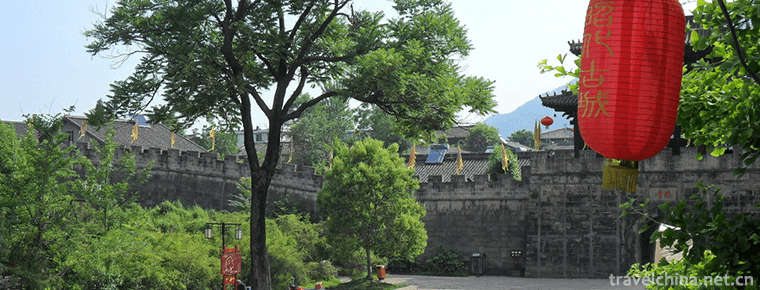
-
Sliced Fish in Hot Chili Oil
Boiled fish, also known as river boiled boiled fish and boiled fish fillet, was first popular in Cui Yun Township, Yubei District, Chongqing..
Views: 247 Time 2018-10-27 -
qikongqigong
Qigong (qigong) is a traditional Chinese method of health care, health preservation and disease elimination. Ancient or "Dandao" is a kind of physical .
Views: 104 Time 2018-11-13 -
Japa Ma and Jami Ma
Japa Ma and Jami Ma are the local traditional folk literature in Lianghe County, Yunnan Province, and one of the national intangible cultural heritage..
Views: 194 Time 2018-12-15 -
Ertan National Forest Park
Ertan National Forest Park is located in Yanbian County and Miyi County, the northern suburb of Panzhihua City, Sichuan Province, with a total area of 732.4 square kilometers .
Views: 137 Time 2018-12-22 -
Tianma Island Tourist Area
Shandong Tianma Island Tourist Area is composed of Ma Qi Mountain and Tianhu Lake. It is located 16 kilometers northeast of Junnan County Town, Linyi City..
Views: 340 Time 2019-02-21 -
Tone tune
Colour tune, commonly known as tune, colour tune, colour lantern, Na Hao Hey and so on, is one of the local operas in Guangxi. It belongs to the system of Lantern opera.
Views: 396 Time 2019-04-04 -
Donghe Opera
Donghe Opera, one of the national intangible cultural heritage, is a traditional drama in Donghe area of Ganzhou City, Jiangxi Province..
Views: 176 Time 2019-04-27 -
The Miao costumes
Miao is an international ethnic group originating from China. In the 2010 census, Miao is mainly distributed in Guizhou, Hunan, Yunnan, Chongqing, Hubei, Sichuan, Hainan, Guangxi and other provinces (.
Views: 147 Time 2019-06-05 -
Shaoxing opera
Shao Opera, a traditional Chinese opera. Originally known as "Shaoxing Chaotian Bomb", commonly known as "Shaoxing Daban", it originated from Qin Opera and was named Shaoxing Opera.
Views: 182 Time 2019-06-14 -
Junlian karst
Junlian karst scenic area. Located in Junlian County, Yibin City. The scenic area covers 130 square kilometers. The main scenic spots include karst peak cluster, box cave, Yuanyang cave, Xianren cave, Mujing hot spring, intermittent spring, etc..
Views: 138 Time 2020-10-16 -
Qingyang Palace
Qingyang palace is located in the second section of the first ring road in Chengdu, Sichuan Province. It is known as "the first Taoist temple in Western Sichuan" and "the first jungle in Southwest China". It is also one of the famous Taoist temples in China..
Views: 154 Time 2020-11-05 -
Deyang post and Telecommunications
By the end of 2018, the total telecom business of Deyang City has reached 12.95 billion yuan, with 701000 fixed telephone users and 3.998 million mobile phone users. The total length of optical cable at the end of the year is 138000 skin kilometers..
Views: 309 Time 2020-12-14

